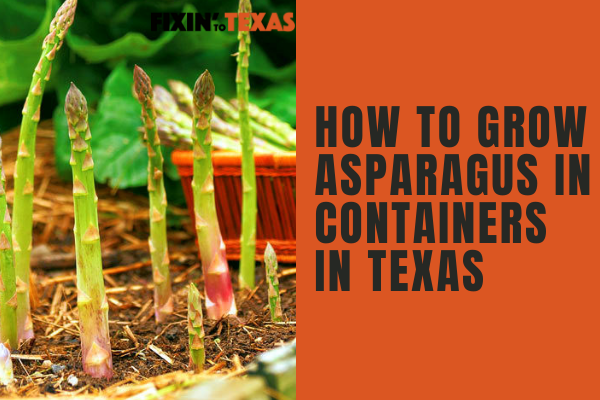
There is a reason why asparagus is so popular in the spring and early summer. It is one of the earliest crops to be harvested in the spring, and the spears are more delicate and flavorful when gathered fresh. Additionally, this adaptable green is high in Vitamin b, Vitamin C, plus calcium, making it a nutritious complement to any meal.
While the prospect of producing asparagus may seem daunting in a container, it needn’t be: Asparagus is a good place to start since it is one of the very few perennial veggies that will produce healthy spears every year with minimal work and space. Although it takes 3 years for asparagus plants to reach full maturity in a container, the wait should be well worth it once you have a cornucopia of healthy spears at your fingertips.
Best Time to Plant Asparagus in Container
- As early as the land can be cultivated, sow asparagus crowns in springtime. Many gardeners plant around the same season as they grow potatoes.
- Asparagus is normally cultivated from “crowns,” which are one-year-old plants, although it may also be produced from seed. Sowing asparagus crowns, on the other hand, avoid a year of the tiresome cleaning that happens with beginning from seed, as well as increasing total yield.
- Open-pollinated ‘Purple-Passion’ and hybrid ‘Sweet-Purple’ are two types that may be cultivated from seed. Start seeds indoors during the spring and transplant seedlings after the final spring frost, once they are 8 – 12 weeks old.
- Before planting, soak seedlings in water for up to 1 whole day.
- In flats or peat cups, sow seeds in damp peat or seed-starting soil.
- Harden off plants for a week outside after they reach Twelve inches in height.
- Transplant the young seedlings to a makeshift garden bed after last spring frost. Select the berry-less healthy male asparagus seedlings and transfer them into your final planting site, eliminating the less-productive seedlings once they have matured in the fall.
How to Plant Asparagus in Container
There are 3 types of ways of asparagus to grow in a container. They’re given below:
- Traditional way
- Step-by-step procedure
- All at once method
Traditional Way:
- Grow crowns back into the ground to protect plants from fertilizer application farming on a regular basis.
- Create a ditch that is 10 – 20 inches wide and 6 inches thick. Make sure your ditches are at least 3 times off if you’re constructing many ditches.
- Dip the plantings heads in warm water for 5 minutes before seeding.
- Put the asparagus heads over the pile, stretching their root.
- Rearrange asparagus samplings 10 to 20 inches apart during the trench.
Step-By-Step Procedure:
- The tops should be covered with fertilizer and earth and planted 2 inches down. After that, pour the water.
- Even as the year progresses as well as the spears grow to a height of 2 inches, add 2 more inches of earth to the trench, being careful not to completely cover the spears.
- After the spears have sprouted within the initial crust of the earth, put additional 2 inches of topsoil. Rep this method until the ditch is completely filled. Depending on where you dug your trench, you may need to apply dirt repeat step over the season.
- Once you’ve actually overrun the trench, mound the ground sufficiently to keep water from collecting from around emerging spears.
All at a Time Method:
- Many gardeners cover the ditch with dirt and compost at the same time. Whereas the traditional strategy is supposed to produce better seedlings withina lengthy period, farmers seldom have issues with both the “all at once” method. So if the subsoil is adequately soft, the spear will easily pass through to the surface.
How to Store Asparagus in Container
- Asparagus doesn’t really keep for long once it has been harvested, so consume it within 2 or 3 days of harvesting.
- Before storing the spears, brush off any apparent dirt or give them a gentle wash with cold water. It’s critical to fully dry cleaned spears since dampness can contribute to mold.
- To store the spears, bundle them together, cover the stem ends in a damp paper towel, and put the package in a plastic bag. Keep in your refrigerator’s crisper drawer.
- You may also keep asparagus stalks in a bowl of water in your fridge if you do have enough room. In the cup, keep approximately an inch of safe drinking water.
Final Note
Asparagus, also known as Asparagus Officinalis, is a popular early-spring vegetable that grows best in North and West Texas’ colder climates. Here, we explained everything about how and when to grow asparagus in Texas. Give it a read!
